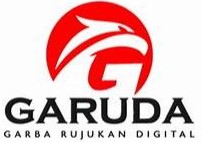Sessile Drop Method Prediction of Particleboard Mechanical Properties
DOI: https://doi.org/10.25077/metal.8.1.6-13.2024
Author(s)
Mekro Permana Pinem (Universitas Sultan Ageng Tirtayasa Banten)Aldiansyah Rudy Adiwinoto (Universitas Sultan Ageng Tirtayasa Banten)
Yusvardi Yusuf (Universitas Sultan Ageng Tirtayasa Banten)
Dhimas Satria (Universitas Sultan Ageng Tirtayasa Banten)
Dwianto Dwianto (Universitas Sultan Ageng Tirtayasa Banten)
Sunardi Sunardi (Universitas Sultan Ageng Tirtayasa Banten)
Hendra Hendra (Universitas Sultan Ageng Tirtayasa Banten)
Nufus Kanani (Universitas Sultan Ageng Tirtayasa Banten)
Harly Demustila (Universitas Sultan Ageng Tirtayasa Banten)
Dimas Triwibowo (Universitas Sultan Ageng Tirtayasa Banten)
Abstract
Full Text:
PDFReferences
Fiorelli, J., Galo, R. G., Castro Junior, S. L., Belini, U. L., Lasso, P. R. O., & Savastano, H. (2018). Multilayer Particleboard Produced with Agroindustrial Waste and Amazonia Vegetable Fibres. Waste and Biomass Valorization, 9(7), 1151–1161. https://doi.org/10.1007/s12649-017-9889-x.
Neitzel, N., Hosseinpourpia, R., Walther, T., & Adamopoulos, S. (2022). Alternative Materials from Agro-Industry for Wood Panel Manufacturing—A Review. Materials, 15(13), 4542. https://doi.org/10.3390/ma15134542.
Syamani, F. A., Arifqi, A. Z., Munawar, S. S., Sudarmanto, S., Astari, L., Prasetiyo, K. W., … Umemura, K. (2022). UTILIZATION OF CITRIC ACID AS BONDING AGENT IN SEMBILANG BAMBOO (Dendrocalamus giganteus Munro) PARTICLEBOARD PRODUCTION. Indonesian Journal of Forestry Research, 9(1), 99–120.
Ranjan, C. (2021). Mechanical behavior of plant-based composite: A case with rice straw. In Mechanical behavior of plant-based composite: A case with rice straw (pp. 105–124). De Gruyter. https://doi.org/10.1515/9783110695373-007.
Ismail, I., Ismaturrahmi, Zakaria, Zulfalina, Jalil, Z., & Fadzullah, S. H. (2019). Mechanical and physical properties of rice straw fiber-reinforced polypropylene composite. IOP Conference Series: Earth and Environmental Science, 364(1), 012013. https://doi.org/10.1088/1755-1315/364/1/012013.
Bhattacharyya, P., Bisen, J., Bhaduri, D., Priyadarsini, S., Munda, S., Chakraborti, M., Nimbrayan, P. (2021). Turn the wheel from waste to wealth: Economic and environmental gain of sustainable rice straw management practices over field burning in reference to India. Science of The Total Environment, 775, 145896. https://doi.org/10.1016/j.scitotenv.2021.145896.
Romasanta, R. R., Sander, B. O., Gaihre, Y. K., Alberto, Ma. C., Gummert, M., Quilty, J., … Wassmann, R. (2017). How does burning of rice straw affect CH4 and N2O emissions? A comparative experiment of different on-field straw management practices. Agriculture, Ecosystems & Environment, 239, 143–153. https://doi.org/10.1016/j.agee.2016.12.042.
FAO publications catalogue 2022. (2022). FAO. https://doi.org/10.4060/cc2323en.
Saini, S., Kuhad, R. C., & Sharma, K. K. (2023). Valorization of rice straw biomass for co-production of bioethanol, biopesticide and biofertilizer following an eco-friendly biorefinery process. Process Safety and Environmental Protection, 173, 823–836. https://doi.org/10.1016/j.psep.2023.03.044.
Gupta, R. K., Hans, H., Kalia, A., Kang, J. S., Kaur, J., Sraw, P. K., … Mattar, M. A. (2022). Long-Term Impact of Different Straw Management Practices on Carbon Fractions and Biological Properties under Rice–Wheat System. Agriculture, 12(10), 1733. https://doi.org/10.3390/agriculture1210173.
Van Hung, N., Maguyon-Detras, M. C., Migo, M. V., Quilloy, R., Balingbing, C., Chivenge, P., & Gummert, M. (2020). Rice Straw Overview: Availability, Properties, and Management Practices. In M. Gummert, N. V. Hung, P. Chivenge, & B. Douthwaite (Eds.), Sustainable Rice Straw Management (pp. 1–13). Cham: Springer International Publishing. https://doi.org/10.1007/978-3-030-32373-8_1
Baskaran, M., Hashim, R., Leong, J. Y., Ong, Y. N., Yhaya, M. F., & Sulaiman, O. (2019). Flame retardant properties of oil palm trunk particleboard with addition of epoxy resin as a binder and aluminium hydroxide and magnesium hydroxide as additives. Bulletin of Materials Science, 42(4), 138. https://doi.org/10.1007/s12034-019-1785-5.
Luo, P., Yang, C., Zhao, D., Lu, X., & Wang, Y. (2018). Adhesion Improvement of Rice Straw Particleboards by Chemical Pre-treatment. In P. Zhao, Y. Ouyang, M. Xu, L. Yang, & Y. Ren (Eds.), Applied Sciences in Graphic Communication and Packaging (pp. 949–954). Singapore: Springer. https://doi.org/10.1007/978-981-10-7629-9_118.
High-density particleboard made from agro-industrial waste and different adhesives. (2019). BioResources, 14(3), 5162–5170. https://doi.org/10.15376/biores.14.3.5162-5170.
Cravo, J. C. M., de Lucca Sartori, D., Mármol, G., Schmidt, G. M., de Carvalho Balieiro, J. C., & Fiorelli, J. (2017). Effect of density and resin on the mechanical, physical and thermal performance of particleboards based on cement packaging. Construction and Building Materials, 151, 414–421. https://doi.org/10.1016/j.conbuildmat.2017.06.084.
Luo, P., Yang, C., Li, M., & Wang, Y. (2019). Manufacture of thin rice straw particleboards bonded with various polymeric methane diphenyl diisocyanate/ urea formaldehyde resin mixtures. BioResources, 15(1), 935–944. https://doi.org/10.15376/biores.15.1.935-944.
Mahieu, A., Vivet, A., Poilane, C., & Leblanc, N. (2021). Performance of particleboards based on annual plant byproducts bound with bio-adhesives. International Journal of Adhesion and Adhesives, 107, 102847. https://doi.org/10.1016/j.ijadhadh.2021.102847.
Boruszewski, P., Borysiuk, P., Jankowska, A., & Pazik, J. (2022). Low-Density Particleboards Modified with Blowing Agents—Characteristic and Properties. Materials, 15(13), 4528. https://doi.org/10.3390/ma15134528.
Zhang, L., & Hu, Y. (2014). Novel lignocellulosic hybrid particleboard composites made from rice straws and coir fibers. Materials & Design, 55, 19–26. https://doi.org/10.1016/j.matdes.2013.09.066.
Pinem, M. P., Wardhono, E. Y., Clausse, D., Saleh, K., & Guénin, E. (2022). Droplet behavior of chitosan film-forming solution on the solid surface. South African Journal of Chemical Engineering, 41, 26–33. https://doi.org/10.1016/j.sajce.2022.04.002.
Pinem, M. P., Wardhono, E. Y., Nadaud, F., Clausse, D., Saleh, K., & Guénin, E. (2020). Nanofluid to Nanocomposite Film: Chitosan and Cellulose-Based Edible Packaging. Nanomaterials, 10(4), 660. https://doi.org/10.3390/nano10040660.
Rebolledo, P., Cloutier, A., & Yemele, M.-C. (2018). Effect of Density and Fiber Size on Porosity and Thermal Conductivity of Fiberboard Mats. Fibers, 6(4), 81. https://doi.org/10.3390/fib6040081.
Krainer, S., & Hirn, U. (2021). Contact angle measurement on porous substrates: Effect of liquid absorption and drop size. Colloids and Surfaces A: Physicochemical and Engineering Aspects, 619, 126503. https://doi.org/10.1016/j.colsurfa.2021.126503.
Chebbi, R. (2021). Absorption and Spreading of a Liquid Droplet Over a Thick Porous Substrate. ACS Omega, 6(7), 4649–4655. https://doi.org/10.1021/acsomega.0c05341.
Gambaryan-Roisman, T. (2014). Liquids on porous layers: Wetting, imbibition and transport processes. Current Opinion in Colloid & Interface Science, 19(4), 320–335. https://doi.org/10.1016/j.cocis.2014.09.001
 Article Metrics
Article Metrics
This article has been read : 103 timesPDF file viewed/downloaded : 26 times
Copyright (c) 2024 Mekro Perdana Pinem
View METAL's Stats

This work is licensed under a Creative Commons Attribution-NonCommercial-ShareAlike 4.0 International License.







